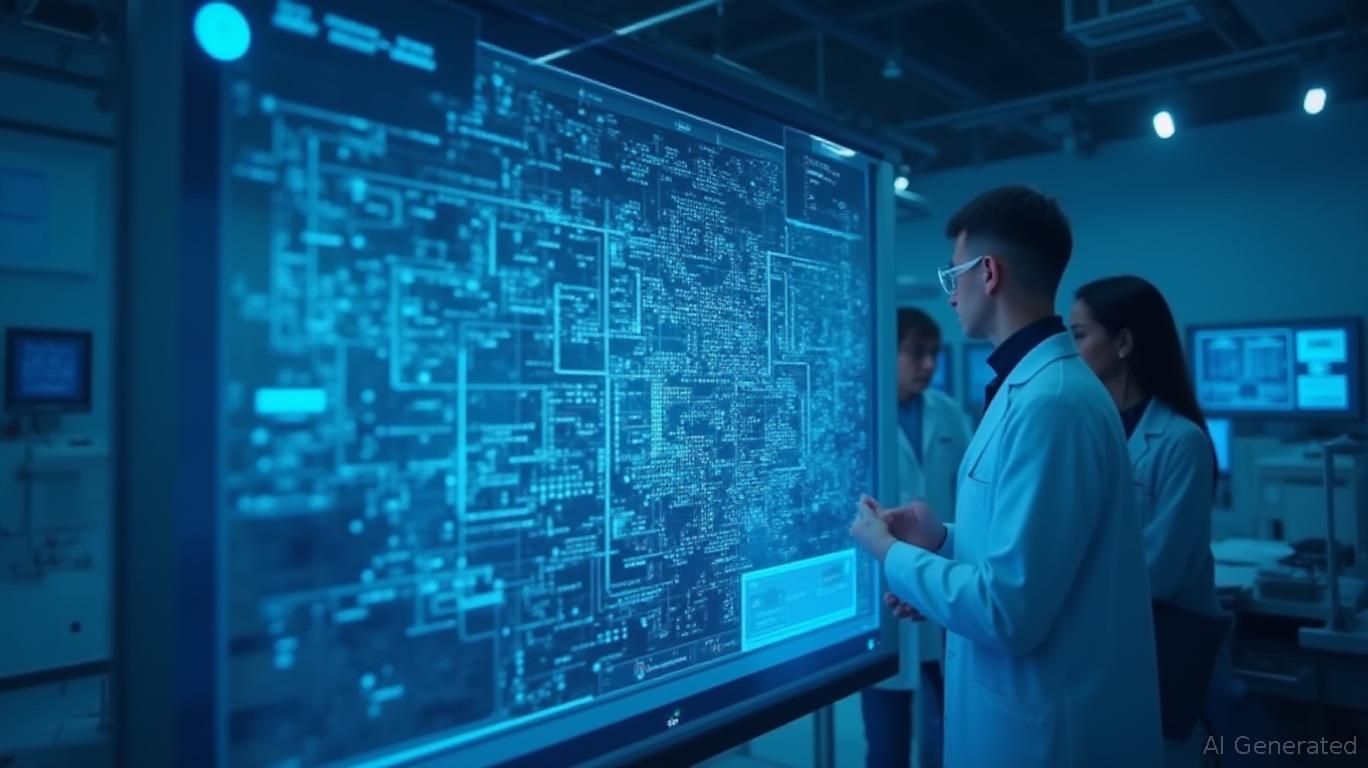Why DeepSeek R1-0528 is the Open-Source AI Revolution Investors Can't Afford to Miss
The global AI race is no longer about proprietary dominance—it's about democratization. Enter DeepSeek R1-0528, an open-source AI model that's quietly upending the $150 billion AI infrastructure market. By achieving performance parity with closed-source giants like GPT-4 and Llama 3 while slashing costs by up to 70%, DeepSeek is primed to disrupt enterprise AI adoption. For investors, this is a once-in-a-decade opportunity to capitalize on a paradigm shift toward affordable, flexible AI tools.

Performance Parity Meets Cost Efficiency: A Disruptive Combination
DeepSeek R1-0528's 685-billion-parameter architecture delivers results that rival closed-source competitors, but at a fraction of the cost. Benchmarks reveal its superiority:
- Math Reasoning: Achieves 87.5% accuracy on AIME 2025, outperforming Llama 3 and matching OpenAI's o3.
- Coding: Surpasses GPT-4o on LiveCodeBench, generating clean, test-ready code on the first try.
- General Reasoning: Doubles its “Humanity's Last Exam” pass rate to 17.7%, a metric that measures advanced problem-solving.
The real game-changer? Costs. While competitors like Gemini 2.5 Pro charge $10+/million output tokens, DeepSeek's API pricing drops to $2.19/million tokens, with discounts during off-peak hours. For enterprises, this translates to $50,000–$100,000 annual savings on cloud compute alone.
GPU manufacturers like NVIDIA (NVDA) are critical to DeepSeek's ecosystem. Their rising stock reflects investor confidence in AI hardware demand.
Open-Source Flexibility: The Enterprise's Secret Weapon
DeepSeek's MIT license allows unrestricted customization, distillation, and deployment—no vendor lock-in. This is a goldmine for businesses:
1. Lower Infrastructure Costs: Deploy locally on mid-range GPUs (e.g., RTX 4090), eliminating reliance on costly cloud providers.
2. Customized Solutions: Tailor the model to industry-specific tasks (e.g., medical diagnostics, legal analysis) without licensing fees.
3. Rapid Scaling: The distilled 8B-parameter variant (DeepSeek-R1-0528-Qwen3-8B) enables startups to build apps affordably, while large enterprises can handle complex tasks via the full 685B model.
Market Opportunity: The $150B AI Infrastructure Shake-Up
- Enterprise Savings: Global cloud spending on LLMs could drop by $20–$30 billion annually as companies migrate to open-source alternatives.
- New Use Cases: Industries like fintech, healthcare, and logistics can now afford advanced AI tools for fraud detection, personalized medicine, and supply chain optimization.
- Developer Ecosystem Boom: Open-source models attract talent and innovation. The DeepSeek community has already produced tools like JSON function-call frameworks, accelerating app development.
Amazon's cloud division faces direct competition as enterprises explore cost-effective alternatives like DeepSeek.
Risks to Monitor
- Regulatory Headwinds: Data privacy laws (e.g., GDPR) and export controls could complicate global adoption.
- Infrastructure Bottlenecks: Scaling requires GPU farms—invest in companies like AMD (AMD) or Graphcore to future-proof your portfolio.
- Competitor Pushback: Closed-source giants might undercut pricing or acquire open-source startups.
Investment Strategy: Act Before the Tide Turns
- Direct Exposure: Invest in DeepSeek's ecosystem partners (e.g., GPU manufacturers, cloud infrastructure firms).
- Open-Source Enablers: Companies like Hugging Face (which hosts DeepSeek variants) and OpenAI's rivals benefit from democratized AI.
- Enterprise Software: Firms like Salesforce (CRM) or Microsoft (MSFT) integrating open-source LLMs into their platforms.
Conclusion: The AI Revolution is Now—Don't Miss the Boat
DeepSeek R1-0528 isn't just a model; it's a catalyst for the next wave of AI adoption. With performance that rivals closed systems, cost structures that empower enterprises, and flexibility that fuels innovation, this open-source giant is rewriting the rules of the game.
The question isn't whether AI will dominate industries—it's whether you'll profit from its rise. Act now to secure exposure to this transformative shift before competitors capitalize on it.
The time to invest in open-source AI infrastructure is now.

Comments
No comments yet